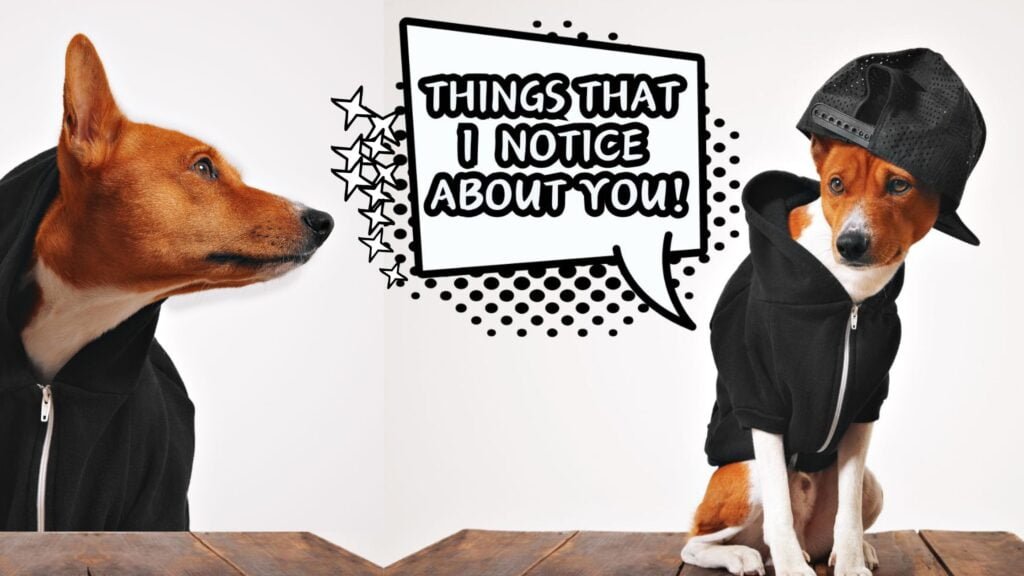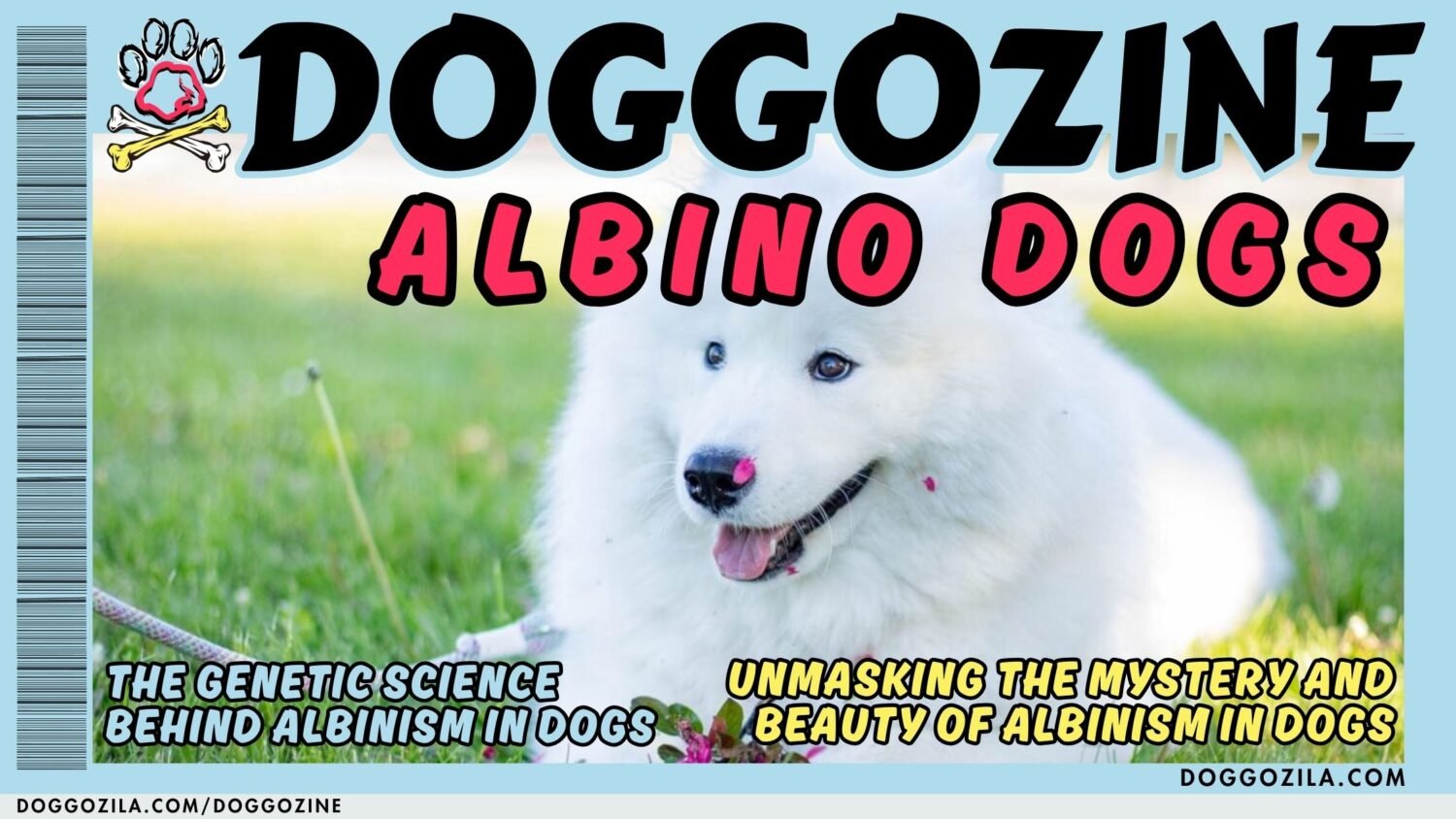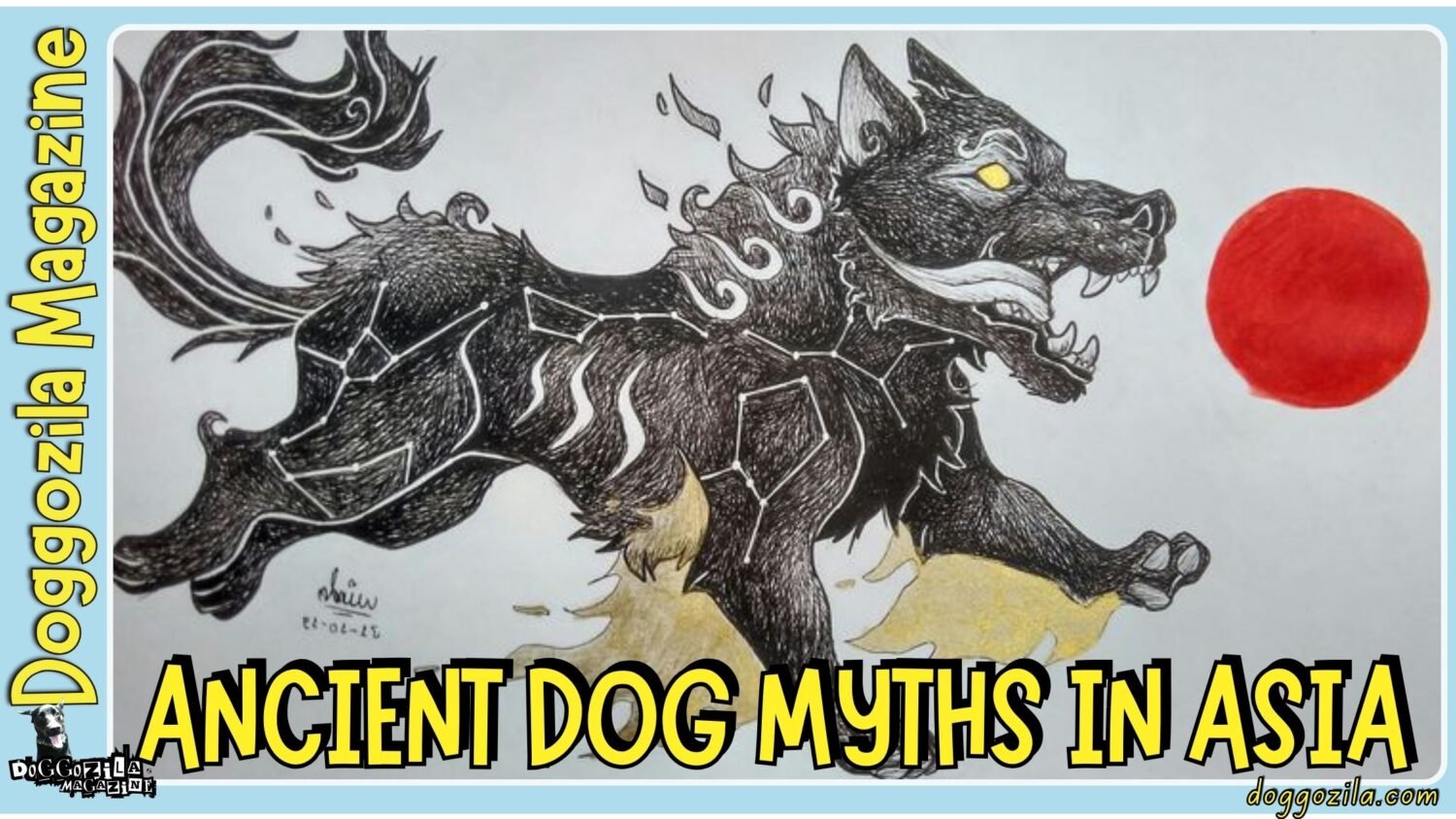There you are, curled up on the couch for a late-night movie, when you hear it, a soft, plaintive cry from the dog bed. You look over and see your furry best friend, fast asleep, paws twitching as if chasing some elusive dream squirrel. His eyes flutter behind closed lids, and he lets out another tiny whimper. Your heart immediately melts with a mix of concern and curiosity. What could he be dreaming about? Why do dogs cry in their sleep, are they in pain, or simply reliving the joy of his afternoon walk?
As dog parents and lifelong canine enthusiasts, many of us have countless nights researching this very phenomenon. The sound of a dog crying in its sleep is hauntingly beautiful, a secret window into their inner world. We’ve discovered that this common behavior is a fascinating blend of science and instinct, a story written in dreams and whispered in sleep.
In this article, we’ll embark on a journey together to decode the mysteries behind those nighttime sounds. We’ll explore the scientific reasons, identify when it’s normal, and learn when it might signal something more. So, grab your favorite blanket and settle in, as we’re about to uncover the truth behind the question so many pet parents ask, why do dogs cry in their sleep?
„ Ever wonder what your whimpering dog is chasing in their dreams?
Discover the fascinating science and heartwarming reasons behind those nighttime cries. “

THE SCIENCE OF DOG DREAMS
Why do dogs cry in their sleep begins with understanding their dream world. Just like humans, dogs experience complex sleep cycles that include a dream-heavy phase called REM ( Rapid Eye Movement ) sleep. During REM sleep, a dog’s brain becomes highly active, processing memories and experiences from their day. Their breathing becomes shallow and irregular, and their eyes dart rapidly behind closed eyelids. This is when the magic of dreaming truly happens, when your dog might be mentally chasing balls or reliving your morning cuddle session.
Researchers have found that dog brain waves during sleep remarkably resemble human patterns, confirming our dogs do indeed dream. These dream sequences explain the physical movements and sound we observe, offering our first clue to the mystery of their sleeping noises.
During this stage, the brain’s motor cortex becomes highly active, sending signals to the body. However, a special mechanism paralyzes major muscles to prevent them from acting out dreams. The tiny whimpers and cries are simply signals that slip through this barrier.
Understanding Why Do Dogs Cry In Their Sleep Through REM Patterns
When your dog enters the REM phase of sleep, their brain doesn’t fully paralyze their body like ours does. This allows for limited physical manifestations of their dream activities. Scientists who have studied dog sleep patterns note that this stage typically begins about 20 minutes after your dog dozes off. During this time, your dog’s brain is practically as active as when they’re awake, processing information and storing memories.
The whimpering or crying you hear likely corresponds directly to whatever scenario is unfolding in their dream narrative. It’s a fascinating glimpse into their subconscious world, where yesterday’s events transform into tonight’s dreams. So, when you hear those soft cries, know that your dog is simply engaged in their natural cognitive processing.
The Neurological Underpinnings Of Dog Dream Vocalizations
Your dog’s brain contains a fascinating structure called the pons, which is located in the brainstem and helps inhibit major movements during sleep. This remarkable mechanism prevents dogs from fully acting out their dreams, though some minor sounds and twitches still escape.
Studies of brain activity in sleeping dogs reveal that different breeds may experience dreaming differently, with larger dogs having longer but fewer dreams and smaller breeds having more frequent but shorter dream episodes.
The vocalizations you hear, whether soft whimpers, muted barks, or tiny cries represent the nervous system’s response to the brain’s dream activity. This complex interplay between brain regions creates the symphony of sleep sounds that both concern and charm us as dog owners.
How Puppy Development Explains Why Do Dogs Cry In Their Sleep?
Puppies experience significantly more REM sleep than adult dogs, which explains why they often seem to twitch and vocalize more frequently during naps. This increased dream time is crucial for their neurological development, helping their growing brains process new experiences and environmental information.
As puppies spend most of their waking moments learning about the world, their brains need this extended dream time to consolidate memories and develop proper neural pathways. Those heartbreakingly adorable sleep cries you hear from a sleeping puppy likely represent their brain working overtime to understand their new environment. It’s a vital part of their cognitive maturation, transforming each new sight, sound, and smell into permanent knowledge through the magic of dreams.
🔑 Key Points: Dogs cry in their sleep primarily during the REM (Rapid Eye Movement) stage, where their brain is highly active, processing memories and experiences from their day into dream narratives.

DECODING THE DOG’S SLEEP CYCLE
To truly understand why do dogs cry in their sleep, we need to examine their unique sleep architecture. Dogs experience sleep cycles that are both shorter and more frequent than humans, typically lasting about 45 minutes from start to finish.
Within each cycle, they progress through various stages, light sleep, deep sleep, and finally the REM (rapid eye movement) stage where most dreaming occurs. Unlike humans, whose sleep cycles last around 90 minutes, dogs can complete two full sleep cycles in a single 45-minute nap.
This means they have more opportunities to enter dream states throughout their sleeping periods, both during nighttime rest and daytime naps. This biological reality explains why you might notice your dog vocalizing during an afternoon snooze as well as in the middle of the night.
Mapping The Journey Through Sleep Stages
During light sleep, your dog can be easily awakened and their muscles remain relatively tense. As they transition into deep sleep, their body relaxes completely, their breathing becomes regular, and this restorative phase helps heal their body and strengthen their immune system.
Finally, they enter the REM stage where the brain activity skyrockets and dreaming occurs, typically lasting just 1-5 minutes per cycle. It’s during this brief but active REM window that you’re most likely to hear those mysterious cries and whimpers. The shorter overall sleep cycle means your dog transitions in and out of dream states multiple times throughout a full night’s rest. Each transition brings the potential for vocalizations as they dive into their dream world.
Identifying Sounds Across Different Sleep Phases
The type of sound your dog makes can often indicate which sleep stage they’re experiencing. Light sleep might produce barely-audible whimpers as they react to outside noises without fully waking. During deep sleep, most dogs are quiet and still, as this phase focuses on physical restoration rather than mental processing. The most dramatic sounds including full-blown cries, barks, and howls, typically emerge during REM sleep when dream activity peaks.
These REM-induced vocalizations often accompany other physical movements like leg twitching, paw paddling, or tail wagging. By recognizing which sounds correspond to which sleep stages, you can better understand whether your dog is simply dreaming or potentially experiencing something that requires your attention.
Why Do Dogs Cry In Their Sleep At Specific Hours?
You might notice your dog seems to cry more frequently during certain periods of the night, and this isn’t your imagination. During the earlier sleep cycles, REM periods tend to be shorter with less intense dream activity. As the night progresses, REM stages become longer and more complex, leading to more pronounced vocalizations in the pre-dawn hours.
Additionally, environmental factors like temperature changes, early morning sounds from wildlife, or reduced household noise can influence their dream content and intensity. If your dog sleeps alone in another room, their cries might also reflect mild separation anxiety manifesting in their dreams. Understanding these patterns helps explain why those sleep cries often cluster during specific nighttime hours.
🔑 Key Points: Dogs have shorter, more frequent sleep cycles than humans, leading to more opportunities to enter the REM dream stage, which is when you are most likely to hear cries and whimpers.

COMMON REASONS WHY DO DOGS CRY IN THEIR SLEEP
Many pet owners wonder why do dogs cry in their sleep when they seem perfectly happy awake, and the answers are more fascinating than you might imagine. The most common reason is simply dreaming, your dog is likely reliving daily experiences, processing memories, or working through emotions during their REM sleep cycles.
These dreams can be about positive experiences like playing at the dog park, anticipating mealtime, or chasing their favorite ball, with cries representing excited communication in their dream world.
Sometimes the crying indicates a less pleasant dream where your dog might feel threatened, challenged, or slightly anxious within their dream narrative. Additionally, certain breeds with strong vocal tendencies, like hounds or huskies, may simply be more predisposed to express themselves vocally during sleep.
Exploring The Dream Theory Behind Dog Sleep Sounds
Dogs likely dream about their daily activities, much like humans do, processing everything from their morning walk to their evening cuddle session. Research suggests that dogs not only dream about recent events but also incorporate familiar people, animal companions, and favorite activities into their dream narratives.
The crying or whimpering you hear could indicate your dog is “talking” to another dog in their dream, responding to your dream-version calling their name, or expressing excitement about dream treats.
Studies of brain activity in sleeping dogs show similar patterns to awake dogs performing various activities, suggesting they’re essentially rehearsing or processing real experiences. So, when you hear those sleep cries, your dog might be enthusiastically greeting you in their dream world.
How Instinct Helps Explain Why Do Dogs Cry In Their Sleep?
Your dog’s ancient ancestors communicated through vocalizations like howls, whines, and barks, and these instincts don’t disappear during sleep. Sleeping dogs might cry while dreaming about territorial behaviors, responding to dream-predators, or communicating with their dream-pack. These deeply ingrained behaviors surface during sleep when the conscious mind relaxes its control, allowing natural instincts to emerge.
Breeds with stronger working or hunting backgrounds may exhibit more intense sleep vocalizations as they dream about their original purposes like herding, tracking, or guarding. This perspective helps us understand that sleep crying isn’t necessarily about immediate emotions but sometimes represents ancient dog conversations playing out in dreams.
The Emotional Processing Theory Behind Nighttime Whimpers
Dogs process emotions during sleep just like humans, working through anxieties, excitements, and social interactions from their waking hours. If your dog had a particularly stimulating day, perhaps with visitors, a vet visit, or an exciting playdate, their sleep cries might reflect them processing these intense experiences.
Even positive stress can manifest in dream vocalizations as your dog’s brain categorizes and stores these emotional memories. Dogs with general anxiety may transfer these feelings into their dreams, causing more frequent or intense crying during sleep as they work through their worries. Understanding this emotional component helps explain why do dogs cry in their sleep more after unusually eventful days.
🔑 Key Points: The most common reasons for sleep crying are dreaming about daily activities, expressing ancient communication instincts, or emotionally processing the events and interactions of their day.
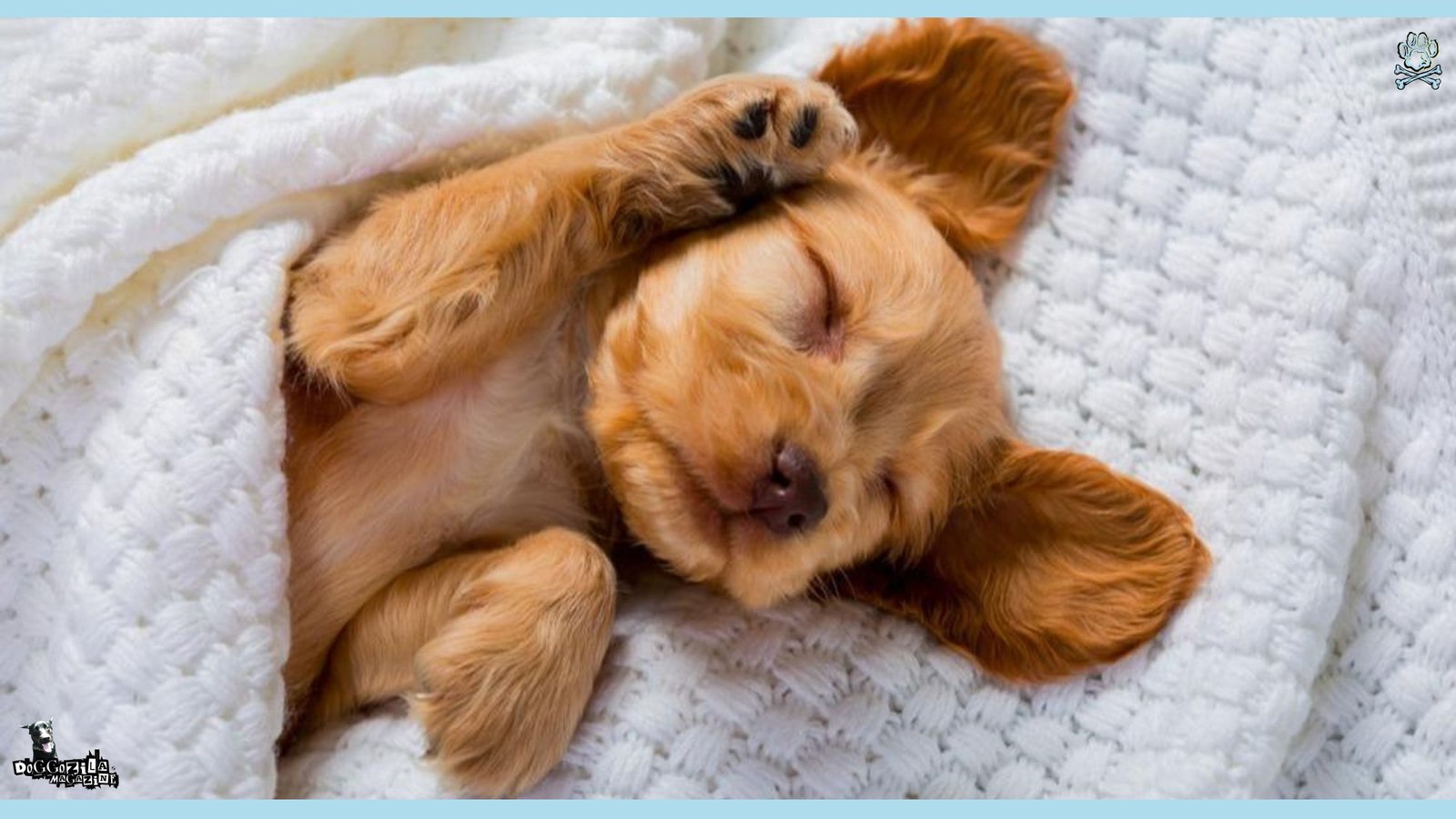
WHY DO DOGS CRY IN THEIR SLEEP: DREAMING VS. NIGHTMARES
Distinguishing between happy dreams and nightmares is crucial when understanding why do dogs cry in their sleep. The key to differentiation lies in observing your dog’s overall body language, such as relaxed muscles suggest positive dreams, while tense muscles and worried expressions suggest something more troubling.
Happy dreams typically involve softer, more rhythmic vocalizations that might sound like contented whimpers or excited little barks. These pleasant dreams often accompany gentle paw movements, relaxed facial expressions, and occasional tail wags that flutter like happy flags.
Nightmares, meanwhile, tend to produce more distressed, higher-pitched cries that may sound anxious or fearful, sometimes accompanied by growls or more frantic movements.
Identifying Signs Of Pleasant Dreams In Your Dog
When your dog is having a good dream, their cries often sound more like excited squeaks or happy murmurs than true distress signals. Their body movements during positive dreams tend to be fluid and rhythmic, like swimming motions or gentle chasing movements. You might notice their ears twitching happily, their facial muscles appearing relaxed, and their tail possibly giving occasional soft thumps against their bed.
The breathing pattern during good dreams remains relatively regular, with the crying sounds occurring in brief bursts rather than prolonged whines. These physical cues can reassure you that your dog is simply dreaming about something enjoyable, like chasing squirrels or playing with their favorite toys.
Recognizing Why Do Dogs Cry In Their Sleep and When Signals Nightmares?
Nightmare cries often sound sharper, more panicked, or more consistently distressed than happy dream vocalizations. During a nightmare, your dog’s body will likely appear tense and rigid, with stiff legs, tightened facial muscles, and possibly even exposed teeth. Their movements might seem more jerky or frantic, as if they’re trying to escape something threatening in their dream.
Other signs of nightmares include sudden gasps, prolonged whining, and even aggressive growling or snapping motions during sleep. If your dog wakes suddenly from what appears to be a nightmare, they may seem disoriented, fearful, or need extra reassurance, like clingy behavior that differs from their normal wake-up routine.
How To Respond Appropriately To Both Dream Types?
Regardless of dream type, veterinarians generally recommend against waking a sleeping dog unless they’re in visible danger of hurting themselves. A startled dog can accidentally bite or snap before fully awakening, as they may not immediately distinguish between dream threats and real ones.
For happy dreams, simply enjoy the show and perhaps take a cute video to share with fellow dog lovers. For apparent nightmares, you can try speaking softly to your dog from across the room, sometimes the sound of your voice can positively influence their dream without waking them.
If your dog frequently experiences nightmares, focus on creating a more stress-free environment during waking hours and ensuring they get adequate exercise. Consistent nightmare episodes warrant a veterinary visit to rule out underlying anxiety or medical issues.
🔑 Key Points: You can distinguish happy dreams from nightmares by observing your dog’s body language, relaxed muscles and rhythmic movements suggest a good dream, while tense muscles and distressed, high-pitched cries may signal a nightmare.

WHY TO BE CONCERNED ABOUT WHEN DOGS DO CRY IN THEIR SLEEP?
While usually normal, understanding when why do dogs cry in their sleep signals problems requires careful observation. Most sleep vocalizations are harmless, but certain red flags indicate it’s time to look deeper.
Be concerned if the crying intensifies dramatically over time, changing from soft whimpers to panicked screams that suggest physical distress. Likewise, watch for crying accompanied by violent thrashing, rigid limbs, or movements so intense your dog risks injury from nearby furniture.
Additional warning signs include apparent confusion upon waking, difficulty becoming oriented, or daytime behavioral changes like increased anxiety or lethargy. Any sleep crying that begins suddenly in an adult or senior dog with no previous history also deserves professional attention.
Medical Conditions That Might Explain Why Do Dogs Cry In Their Sleep
Several medical issues can cause or contribute to increased vocalization during sleep. Arthritis or joint pain may cause your dog to cry out when shifting positions during sleep, as the movement triggers discomfort. Gastrointestinal issues, dental problems, or other sources of persistent pain can also manifest as sleep crying when your dog’s consciousness isn’t fully alert to suppress the response.
Seizure disorders can sometimes be mistaken for active dreaming, though seizures often feature more rhythmic, repetitive movements and vocalizations. Canine cognitive dysfunction (similar to dementia) in senior dogs frequently causes increased vocalization, including during sleep, due to brain changes and confusion. Any suspected medical cause warrants a veterinary examination for proper diagnosis and treatment.
Understanding REM Sleep Behavior Disorder In Dogs
In rare cases, dogs can experience REM Sleep Behavior Disorder, where the brain mechanisms that paralyze most muscles during dreams malfunction. With this condition, dogs physically act out their dreams rather than just making minor movements, potentially running into walls, biting at the air, or thrashing violently.
Unlike normal dream movements, RBD episodes are intense, coordinated, and potentially dangerous to both the dog and anyone nearby. This neurological condition requires veterinary attention, as it can sometimes be managed with medication to reduce the risk of injury during sleep. The dramatic nature of RBD makes it relatively easy to distinguish from normal sleep crying, as the behaviors are far more extreme than typical twitching or whimpering.
Differentiating Between Sleep Crying And Seizure Activity
Seizures during sleep can be particularly alarming because they’re often mistaken for intense dreams. Unlike dream movements, seizures typically feature more rigid, rhythmic paddling motions rather than the fluid running movements of dreams. During a seizure, dogs may drool excessively, lose bladder or bowel control, and remain unresponsive to your voice or touch.
The vocalizations during seizures often sound different from dream cries, they are more stereotyped and less emotionally varied. Post-seizure, dogs typically experience a prolonged recovery period where they seem disoriented and confused, whereas dogs waking from dreams usually orient themselves quickly. If you suspect seizures, recording an episode on your phone can help your veterinarian make an accurate diagnosis.
🔑 Key Points: While usually normal, you should be concerned if the crying is accompanied by violent thrashing, signs of physical pain, confusion upon waking, or if it is a sudden new behavior in an adult dog.

WHY DO DOGS CRY IN THEIR SLEEP: BREED AND AGE FACTORS
Specific factors like breed and age significantly influence why do dogs cry in their sleep, creating distinct patterns across different dog populations. Understanding these predispositions helps you better interpret whether your dog’s sleep sounds fall within normal ranges for their breed and life stage.
Breed characteristics definitely play a role, vocal breeds like Siberian Huskies, Alaskan Malamutes, and Beagles often vocalize more during sleep, just as they do when awake. These breeds retain strong communication instincts from their working backgrounds, where howling and vocalizing served important purposes for their ancestors.
Age is another crucial factor, puppies spend more time in REM sleep and thus cry and twitch more frequently, while senior dogs may experience age-related conditions that increase sleep vocalizations.
How Breed Heritage Influences Sleep Vocalizations?
Working and sled dog breeds like Huskies and Malamutes often “talk” in their sleep, sometimes producing full howls that reflect their pack communication heritage. Hounds and hunting breeds may cry during dreams about tracking scents, their vocalizations reflecting the excited baying they’d use on a real hunt.
Herding breeds like Border Collies or Australian Shepherds might make softer, more directed whimpers as they dream about corralling sheep or responding to whistle commands. Interestingly, some companion breeds like Cavalier King Charles Spaniels may make more contented-sounding sleep noises, possibly dreaming about lap-sitting or cuddle sessions. Recognizing these breed-specific tendencies helps explain why do dogs cry in their sleep with such varied vocalization styles.
Understanding Why Do Dogs Cry In Their Sleep As Puppies
Puppies experience significantly more REM sleep than adult dogs, up to 50% of their sleep time compared to about 20% for mature dogs. This increased dream time is crucial for brain development, helping their nervous system process new experiences and form proper neural connections. Those frequent cries and whimpers you hear from a sleeping puppy likely represent their brain actively learning about their environment, even during rest.
Puppies also have shorter sleep cycles, meaning they transition into dream states more frequently throughout naps and nighttime sleep. This biological reality explains why puppy owners observe far more sleep vocalizations and movements, it’s a natural, healthy part of their cognitive development.
Age-Related Changes In Senior Dog Sleep Patterns
As dogs enter their senior years, they may experience changes in sleep architecture that affect their dreaming patterns. Canine Cognitive Dysfunction (similar to dementia) can cause disruption to normal sleep-wake cycles, leading to increased vocalization at night. Older dogs with arthritis or other chronic pain conditions may cry out when shifting positions during sleep, as the movement causes sudden discomfort.
Senior dogs also tend to sleep more lightly, meaning they may wake more easily from dreams and remember the transition, potentially making the dreams seem more intense. Understanding these age-related factors helps explain why do dogs cry in their sleep more frequently as they grow older, and when it might indicate a need for veterinary intervention.
🔑 Key Points: A dog’s breed and age significantly influence sleep cries, vocal breeds (like Huskies) are more prone to it, puppies do it more due to increased REM sleep for brain development, and older dogs may cry more due to age-related conditions like pain or cognitive decline.
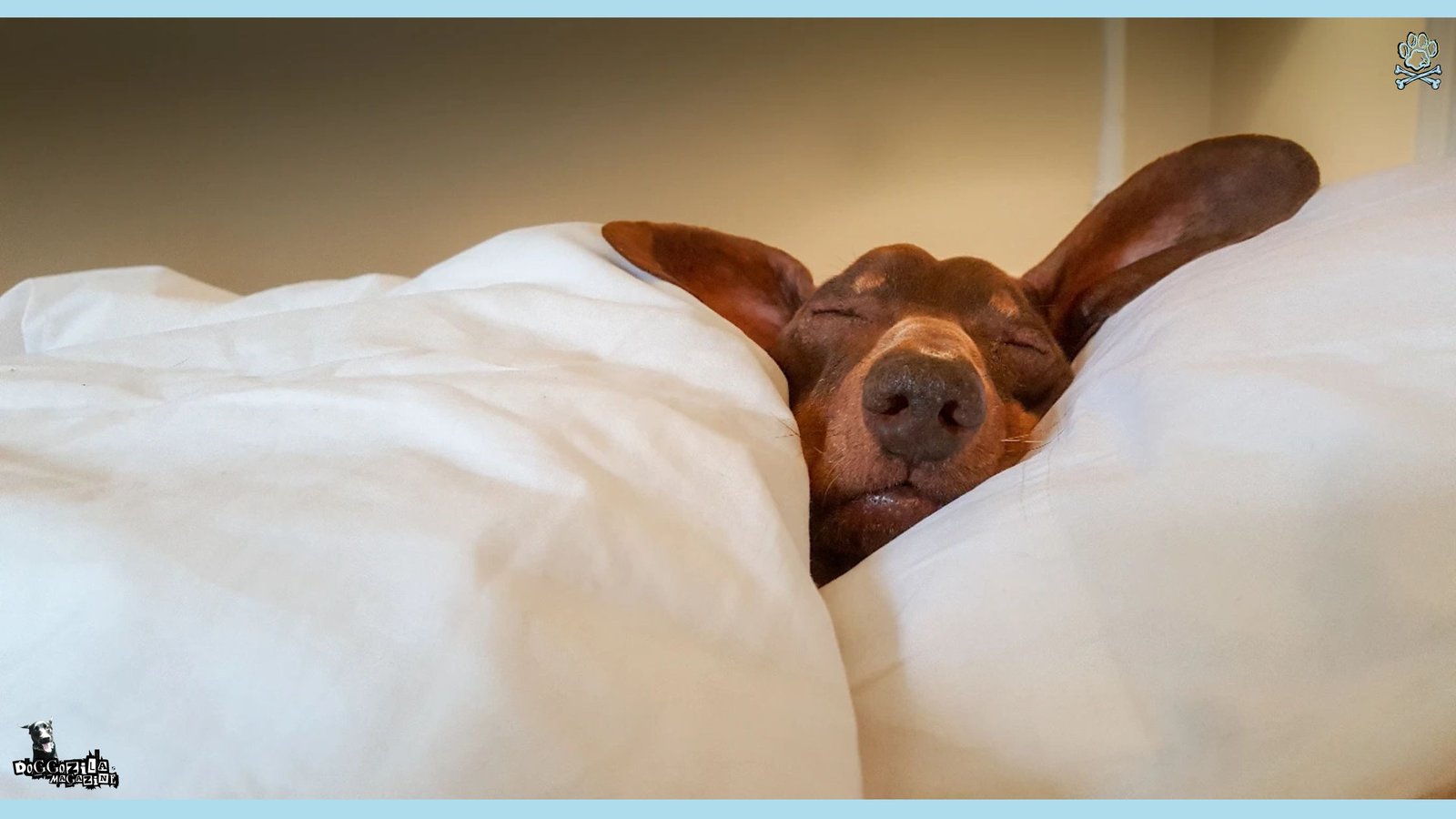
CREATING BETTER SLEEP FOR YOUR CRYING PUPPY
If you’re wondering how to address why do dogs cry in their sleep, implementing better sleep hygiene can work wonders. Start by establishing a consistent bedtime routine that helps your dog understand when it’s time to wind down and prepare for rest.
Create a comfortable sleeping environment specifically tailored to your dog’s needs, consider temperature, bedding, and noise levels. Ensure your dog receives adequate physical and mental stimulation during waking hours, as a tired dog sleeps more soundly and deeply.
Address any potential sources of anxiety that might be creeping into their dreams, using calming techniques before bedtime. Sometimes simple adjustments to their sleep setup can significantly reduce the frequency and intensity of sleep crying episodes.
Designing The Ideal Sleep Environment for Your Dogs
Choose a quiet, consistent location for your dog’s bed, away from high-traffic areas and noisy appliances that might disrupt their sleep. Provide appropriate bedding like orthopedic beds for older dogs, padded mats for arthritic canines, and crate mats for dogs who prefer den-like spaces.
Consider temperature carefully, as dogs can become restless if too hot or cold, aim for a cool but comfortable environment. Many dogs benefit from white noise machines or soft music specifically designed for canine relaxation, which can mask disturbing outside sounds.
For anxious dogs, an item carrying your scent, like an unwashed t-shirt, can provide comfort throughout the night. These environmental adjustments can help minimize disruptions to your dog’s sleep cycles, potentially reducing crying episodes.
Establishing Pre-Sleep Rituals To Calm Your Dog
Develop a consistent sequence of pre-bedtime activities that signal to your dog that the day is ending, such as a final potty break, followed by quiet cuddle time. Avoid vigorous play or exciting activities in the hour before bedtime, as these can lead to more active dreams. Instead, offer gentle brushing sessions, calm petting, or quiet conversation to help your dog relax.
Some dogs benefit from a small, healthy bedtime snack to prevent hunger from disrupting their sleep. Consider using calming pheromone diffusers, sprays, or supplements recommended by your veterinarian for particularly anxious dogs. These rituals can help your dog transition more peacefully into sleep, potentially influencing their dream content.
Daytime Strategies To Influence Nighttime Sleep Quality
Ensure your dog receives sufficient physical exercise during the day, a tired dog sleeps more soundly and may experience less restless dreaming. Provide adequate mental stimulation through training sessions, food puzzles, and interactive toys to engage their brain during waking hours. Address separation anxiety through gradual desensitization training if your dog seems distressed when apart from you.
Maintain consistent feeding schedules and avoid giving your dog caffeine-containing foods like chocolate, which can disrupt sleep patterns. For senior dogs, consider shorter, more frequent walks instead of one long exhausting outing. These daytime strategies can positively influence why do dogs cry in their sleep by promoting more restful sleep patterns.
🔑 Key Points: You can reduce sleep crying by creating a consistent bedtime routine, providing a comfortable and quiet sleep environment, and ensuring your dog gets adequate physical and mental exercise during the day.

WHY TO SEEK HELP WHEN DOGS DO CRY IN THEIR SLEEP?
While most sleep crying is normal, knowing when to consult professionals about why do dogs cry in their sleep is crucial. You should schedule a veterinary visit if the crying episodes intensify dramatically, change in character, or occur alongside other concerning symptoms.
Definitely seek help if your dog’s sleep crying is accompanied by violent movements that risk injury, or if they seem confused or disoriented upon waking. Any sleep behaviors that interfere with your dog’s ability to get proper rest or that leave them exhausted during the day, warrant professional attention.
Similarly, if your own sleep is consistently disrupted by your dog’s nighttime vocalizations, seeking solutions is reasonable for both your indwelling and your dog’s.
Documenting Symptoms For Your Veterinary Visit
Before your appointment, start a sleep journal documenting when the crying occurs, how long it lasts, and what the vocalizations sound like. Try to capture a video recording of a typical episode on your phone, as this provides your veterinarian with invaluable diagnostic information. Note any patterns you observe, does the crying happen more after active days, or in specific sleep positions?
Track your dog’s daytime behavior too, including energy levels, appetite changes, and any signs of pain or stiffness. List all medications, supplements, and your dog’s complete diet, as some ingredients can affect sleep patterns. This thorough documentation will help your veterinarian identify potential causes behind why do dogs cry in their sleep.
What To Expect During The Veterinary Evaluation?
Your veterinarian will likely begin with a thorough physical examination, checking for signs of pain, dental issues, or other physical concerns. They’ll ask detailed questions about your dog’s sleep patterns, daily routine, diet, exercise, and the specific nature of the sleep crying. Diagnostic tests like blood work, urinalysis, or possibly x-rays may be recommended to rule out underlying medical conditions.
In some cases, your vet might refer you to a veterinary neurologist or behaviorist for further evaluation, especially if seizures or significant anxiety is suspected. The goal is to identify or rule out medical causes before focusing on behavioral solutions for why do dogs cry in their sleep.
Treatment And Management Options For Sleep Disturbances
Depending on the diagnosis, treatment might include pain management for arthritis, anti-anxiety medications, or supplements to support cognitive function in senior dogs. For dogs diagnosed with REM sleep behavior disorder, medications like clonazepam may be prescribed to reduce physical dream-acting. Behavioral modification techniques, environmental adjustments, and routine changes often form the foundation of managing sleep issues.
In cases where canine cognitive dysfunction is diagnosed, specific diets, supplements, and medications can help slow progression and improve sleep quality. Your veterinarian will tailor the treatment plan to address the specific reasons why do dogs cry in their sleep, focusing on improving both your dog’s rest and overall quality of life.
🔑 Key Points: You should seek veterinary help if the sleep crying is intense, violent, accompanied by other symptoms, or disrupts your dog’s quality of rest, as it could indicate an underlying medical or neurological issue that needs diagnosis and treatment.
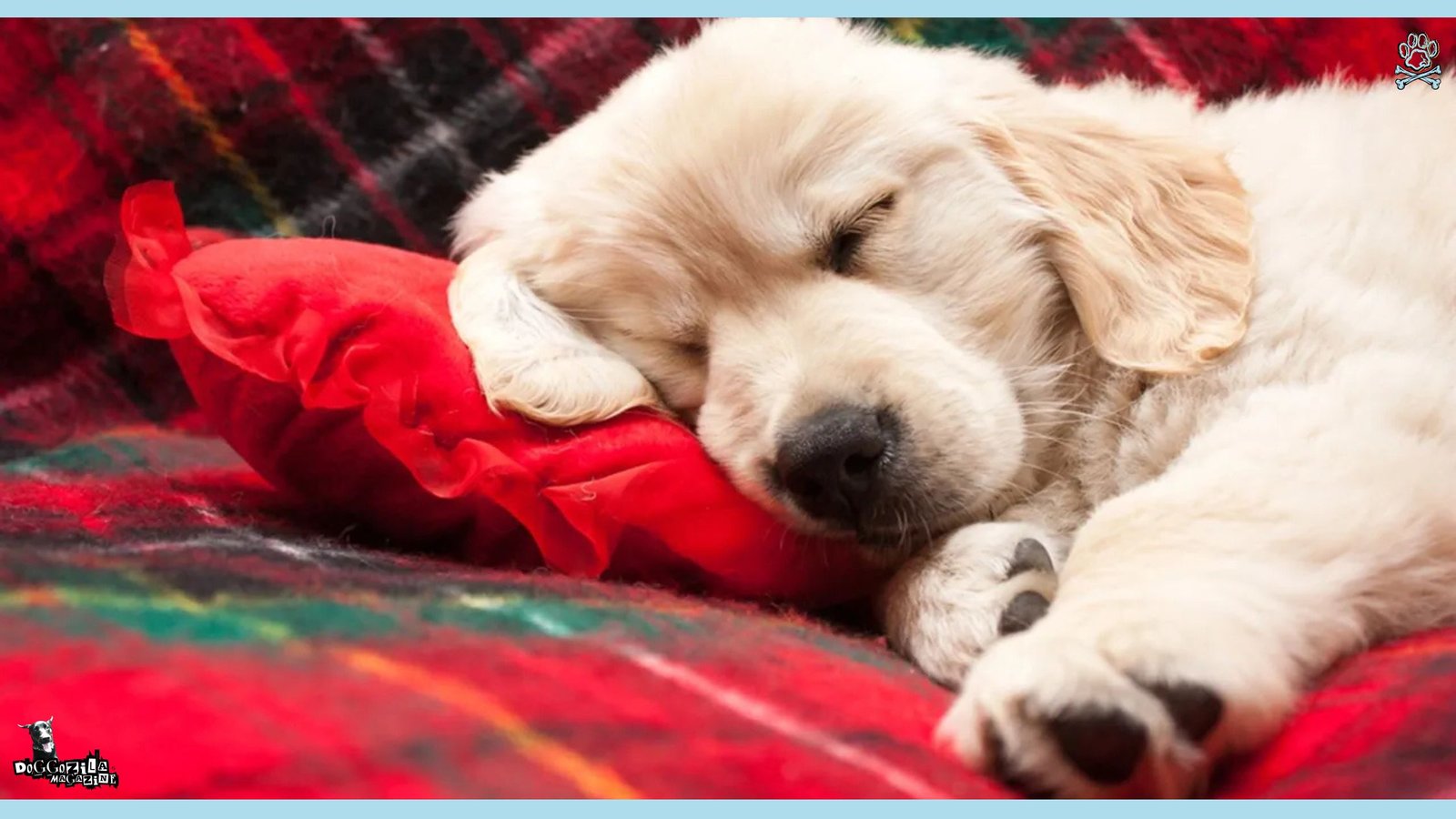
EMBRACING THE MYSTERY OF THE SLEEPING DOG MIND
Those nighttime cries and whimpers from your sleeping dog represent a fascinating intersection of science, instinct, and emotion. While we may never know exactly what our dogs dream about, we can appreciate that these vocalizations are typically normal expressions of their rich inner world.
The next time you hear your furry friend crying in their sleep, you can watch with greater understanding, knowing they’re likely processing their day, communicating in dreamscapes, or simply enjoying imaginary adventures. Remember that most sleep crying is completely harmless, though staying alert to changes helps ensure your dog’s ongoing health and happiness.
Our journey through the mysterious world of dog sleep has revealed that the question “why do dogs cry in their sleep” has multiple answers, from joyful dreaming to ancient instincts. As dog lovers, we’re privileged to witness these intimate moments when our companions’ minds dance through dream worlds.
Final Thoughts on Why Do Dogs Cry in Their Sleep
You are the expert on your own dog. If something truly seems wrong with their sleep behavior, never hesitate to contact your veterinarian. It’s always better to be safe and get a professional opinion. Your concern comes from a place of love and deep connection. Balancing a scientific understanding with your personal knowledge of your dog is the key to great care. You’ve got this.
Next time you hear your dog cry in their sleep, smile. They might be dreaming of running with you through a field or playing their favorite game. Those sounds are a testament to the full and happy life you provide for them. Their dreams are filled with the memories you help create. It’s a beautiful, nightly reminder of the incredible, unspoken bond we share with our canine companions. So let them dream on.
By creating a peaceful sleep environment, maintaining consistent routines, and staying observant for changes, we can support our dogs’ restful slumber.
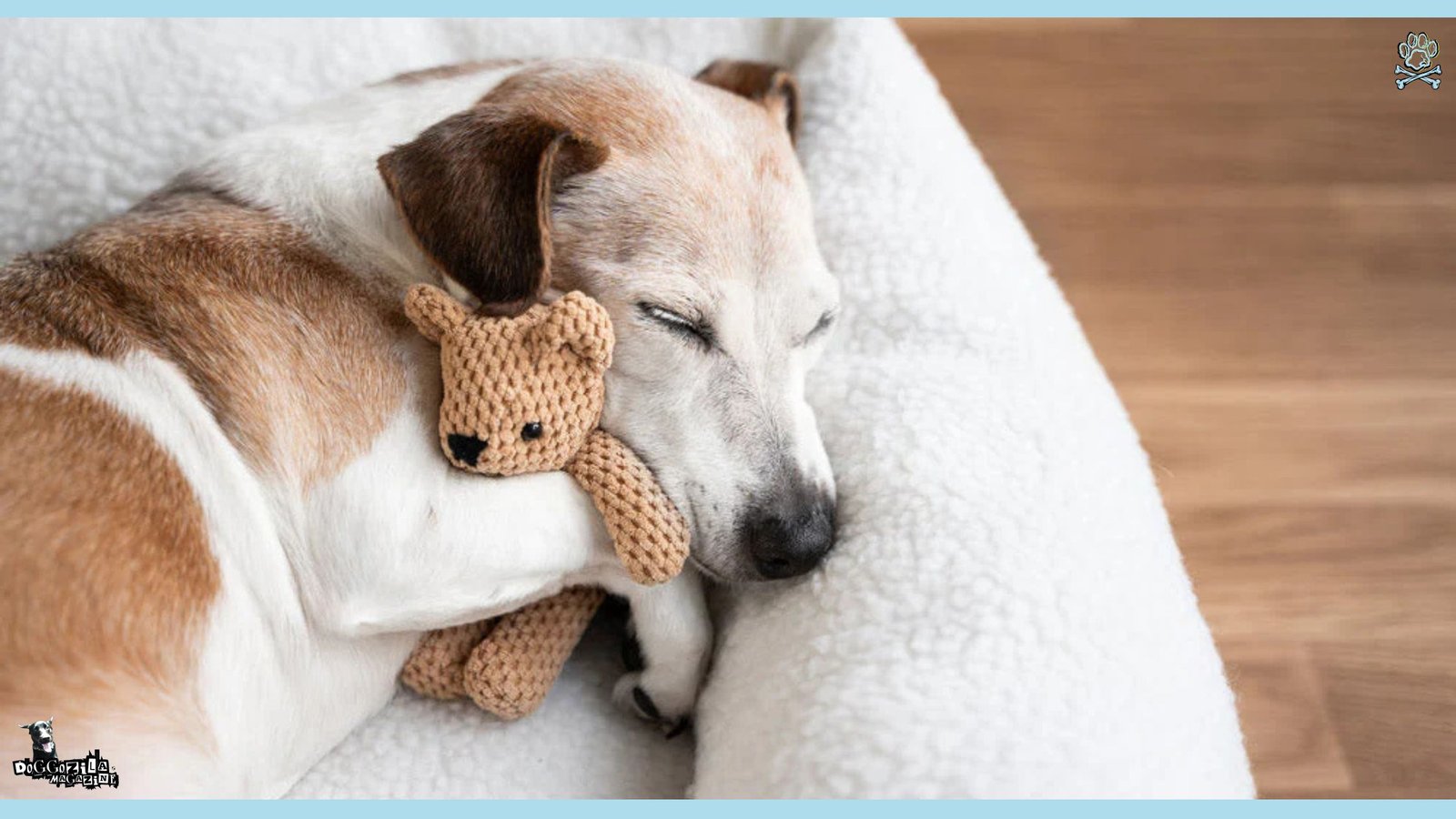
So tonight, when you hear those familiar whimpers, take comfort in knowing that your dog is simply exploring the boundless landscape of their imagination, with you always at the center of their dreams.




